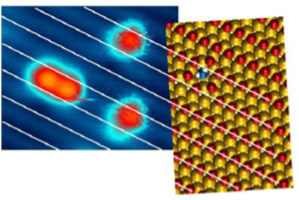Interaction of water molecules with different molecular adsorption on metal surfaces studied by fast STM
Shahnaz Khosravianarab
Ruhr University, Bochum
The investigation of molecular adsorbates on metal surfaces and their physio-chemical reactions is of great interest due to their important applications in different fields such as fuel cells, semiconductor industry, corrosion science, environmental chemistry, and catalysis. Insight into molecular interactions with water is a principle step to understand the chemical process and to develop the wetting characteristics of the materials.
In this project, we study the interaction of water with metal surfaces of various surface symmetries, such as, fcc(111), fcc(110) and fcc(100), which are partially covered with different adsorbates viz. oxygen, HCl, Base molecules (Thymine, Guanine, Cytosine, Adenine), and metalloporphyrines including phtalocyanines.
While researchers have been working on the interaction of molecules on metal surfaces, little is known about the influence of the presence of water in this environment. A rare example is shown in Fig.1. The main aim of this work is to determine the influence of the inter-molecular interaction by means of STM (Scanning Tunneling Microscopy) technique. Moreover, we investigate how the structure of such molecule mixtures and their growth on various surfaces are affected by different factors such as step edges and varying temperature.
Fig.1. STM image showing individual water molecules adsorbed between the oxygen rows on Ru (0001) at 140 K. Ru atoms are represented in yellow, surface oxygen in red and the oxygen of the water molecule in blue colors [Sabine Maier, Phys. Rev. B 82, 075421 (2010)].
Got interested? Contact via email: shahnaz.khosravianarab@rub.de

